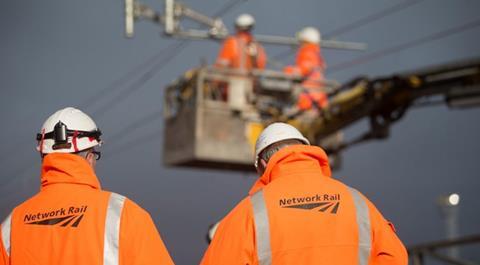
UK: There is ‘an urgent need for continued modernisation and significant efficiency improvements to bear down on the cost of the railway’, according to the High Level Output Specification which sets out what the Secretary of State wants to be achieved from the management of rail infrastructure in England and Wales during Control Period 7 from April 1 2024 to March 31 2029.
HLOS 2022 was published on December 1 along with the Statement of Funds Available for CP7. The focus is on operations, maintenance, and renewals, and enhancements to the network are not included.
The HLOS says the government ‘strongly supports the recovery of our railway’ following the pandemic, but it wants to see increased value for money for the taxpayer, whilst delivering for passengers and freight customers.
HLOS objectives include:
- that Network Rail’s plans for CP7 support key revenue-generative flows, whilst ensuring that flows with a higher subsidy requirement continue to receive an appropriate level of service;
- for Network Rail to engage with stakeholders to identify system-wide opportunities to improve whole-system outcomes at lower cost;
- safety to be a continued priority, including suicide and trespass prevention, and with regard to threats including crime, terrorism, natural disasters and cybersecurity;
- work to improve level crossing safety and a continued focus on trackworker safety;
- benchmarking by Network Rail region to drive efficiencies and a better understanding of costs;
- properly scoping the cost of projects to support efficient delivery;
- collaboration with the supply chain to drive efficiencies;
- a ‘robust’ approach to commercial practices in contracting, ensuring that liability for cost and overruns sits with the appropriate party;
- at least one third of outsourcing spend to be through SMEs;
- appropriate pipeline visibility, facilitating investment in skills and employment;
- ensuring that cost saving measures do not move costs onto other parties;
- working with operators, ORR and customer representatives to determine appropriate performance metrics and targets which represent value for money and which align with train operator plans;
- an efficient approach to system operation, including strong train service planning expertise;
- considering inclusion and accessibility as a core element of plans;
- a stretching yet realistic target to facilitate rail freight growth;
- development of plans for climate change adaptation;
- progress towards a low-emissions railway and pursuing decarbonisation objectives, including management of whole life carbon for all schemes;
- continued adoption of digital signalling to transition to ETCS;
- research, development and innovation plans supported by robust monitoring and evaluation.
Industry regulator the Office of Rail & Road must now consider how best to achieve these principles, though close engagement with Network Rail and other stakeholders.
The SoFA puts Network Rail expenditure in CP7 at £44·063bn, with £27·529bn to come from the Network Grant and the remainder to be funded by income from train operators and commercial activities. The Secretary of State requires that Network Rail will not take loans or issue bonds to fund the HLOS.
The 2017 SoFA set out total Network Rail expenditure of £47·9bn, which included £10·4bn for enhancements.
Commenting on the HLOS and SoFA, the Railway Industry Association said the new funding settlement appears to allow for a small real terms increase in expenditure on operations, maintenance and renewals, however a direct comparison with CP6 cannot be made because of differences in what is included.



